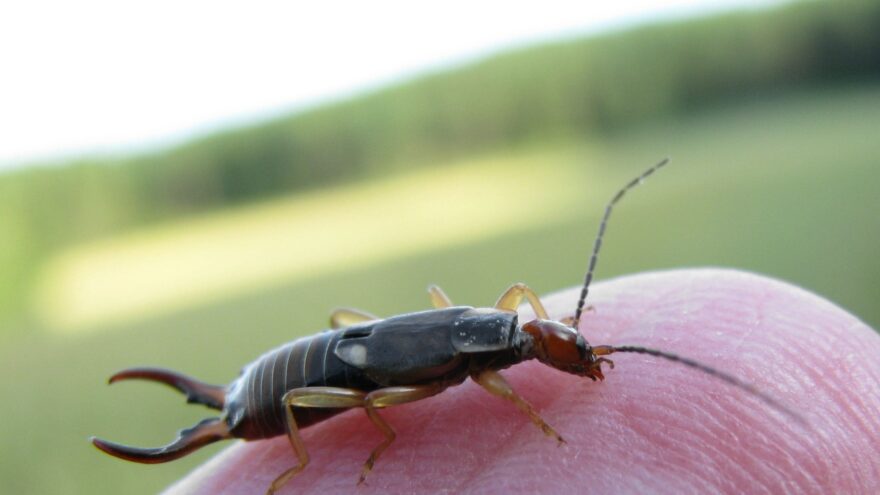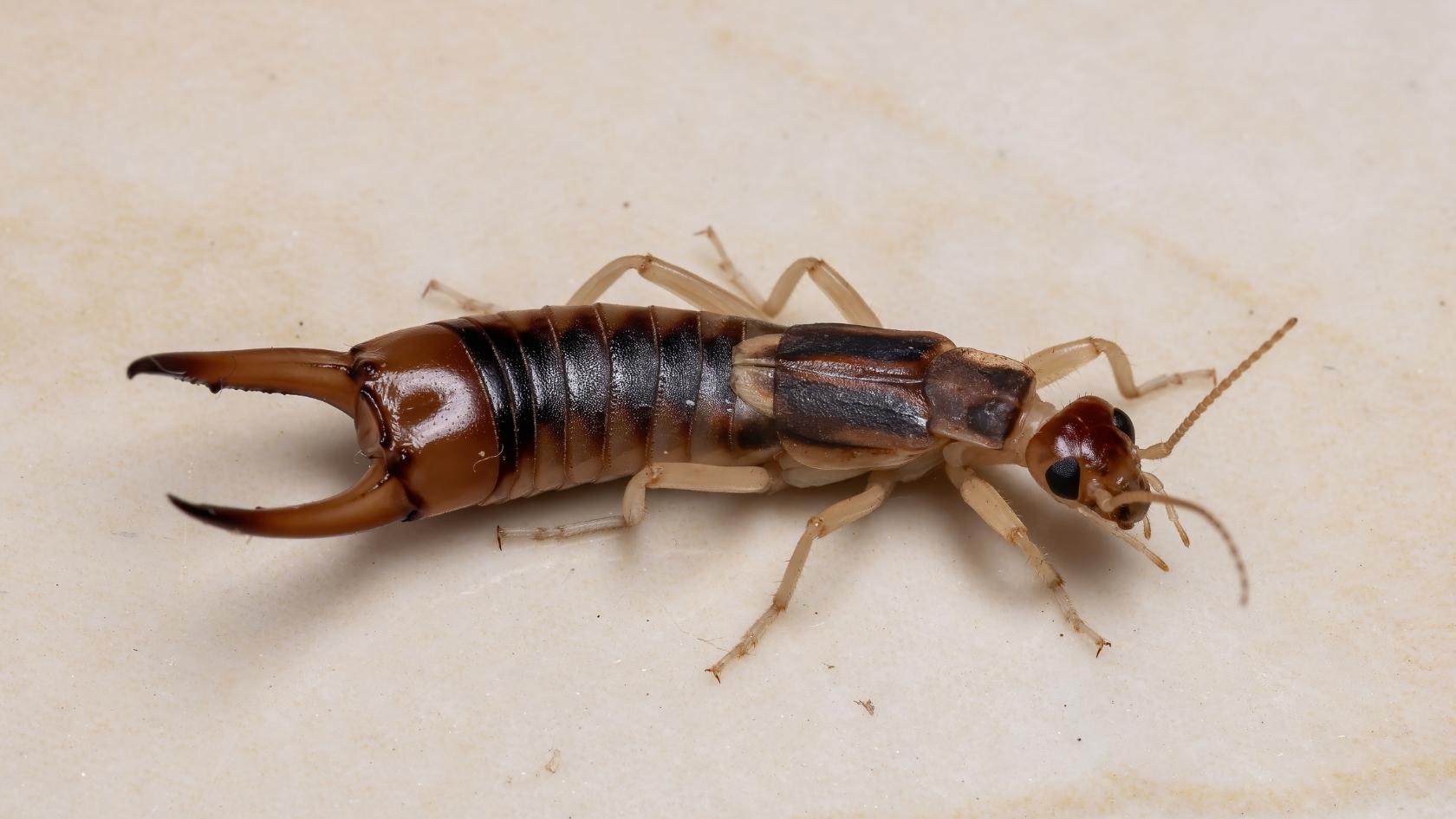
Banish Pincher Bugs: A Complete Guide to Get Rid of Earwigs from Your Home
Earwigs, known for their intimidating pincers, are creepy insects that most homeowners wish to avoid. While earwig bugs often get a bad rap due to myths and their frightening appearance, they are more of a nuisance than a threat. If you spot earwigs in your home, garden, or both, fear not. This guide provides everything you need to know about identifying earwigs, understanding their habits, and most importantly, explains how to get rid of earwigs effectively.
Get Rid of Earwigs in the House
If you’ve noticed these mandible-flashing critters around your home, you’re not alone. Earwigs often seek refuge inside houses. Particularly during the warmer months or when it’s damp outside, insects and other pests may come indoors seeking shelter. Even though they prefer dampness, excessive moisture outside can drive them indoors to escape heavy rain, find food, or locate more stable humidity levels. Indoors, they can find consistent conditions and protection from the elements. They love hiding in dark, moist areas like basements, bathrooms, and kitchens. To combat them, the first step is to eliminate the conditions they thrive in.
Begin with reducing indoor moisture levels. Fix any leaky faucets or pipes promptly and ensure proper ventilation in high-humidity areas. Dehumidifiers can be particularly useful in basements and other damp zones.
Another effective strategy is to seal entry points around windows, doors, and foundations. Make sure door sweeps and weather strips are intact and consider using silicone caulk to fill any gaps.
Regular housekeeping, including vacuuming, dusting, and decluttering, will also deter earwigs by removing their potential hiding spots and food sources.
For immediate relief, use sticky traps or sprinkle diatomaceous earth (DE) in areas outdoors where earwigs are prevalent. These methods to get rid of earwigs are non-toxic and can significantly reduce their numbers. However, for a more extensive infestation, seek professional pest control. Contact us to learn about our pest control services.
What Do Earwigs Eat?
Earwigs are omnivorous creatures with a varied diet, which includes both plant and animal matter. They are known to munch on leaves, flowers, fruits, and vegetables, which can make them frequent visitors to your garden. At the same time, they also consume decaying organic matter, insects, and small arthropods.
Their dietary habits mean they play a role in the ecosystem, helping break down decaying matter and controlling other insect populations. However, when earwig populations grow too large, they may start damaging ornamental plants like dahlias, marigolds, and roses, as well as crops like lettuce and strawberries, leading to the need for effective pest control.
Understanding their diet helps in managing their presence and implementing strategies to relocate them away from gardens and homes. Providing alternate food sources like compost piles can divert them from specific areas you wish to protect. However, make sure your compost pile is placed at least 50 feet away from these areas.
Why Do They Call Pincer Bugs Earwigs?
The name “earwig” has intrigued many, often leading to disgusting tales about these insects crawling into people’s ears. The term is derived from the Old English words “ēare,” meaning ear, and “wicga,” meaning insect. It was a folklore belief, rather than reality, that earwigs would burrow into ears and then into human brains.
This misconception has been perpetuated over centuries, even appearing in literature. Despite the myths, earwigs are no more likely to crawl into your ears than any other bug. They are simply drawn to warm and humid environments, which may occasionally lead them near sleeping humans.
Are They Harmful to People and Pets?
Earwigs look menacing with their prominent pincers, but they pose little threat to humans and pets. While they can use their pincers as a defense mechanism, the pinch is typically mild and not harmful. Often, an earwig will try to retreat rather than confront a threat.
Pet owners can rest easily, as earwigs are not poisonous and pose no significant risk to dogs or cats. Of course, keeping curious pets from playing with or eating them is advisable to avoid any minor discomfort or irritation.
While they might look intimidating, they are less of a threat and more a target for routine pest control. Still, homeowners may find it best to get rid of earwigs.
Do Earwigs Have an Odor?
Though earwigs are generally not associated with any smell, they can emit a noticeable, albeit faint, odor when crushed or disturbed. This scent is due to chemical secretions they produce as a defense mechanism to deter predators. While the odor is usually not strong enough to be detected under normal circumstances, encountering a large number of earwigs or disturbing them may result in a slight musty or acidic scent. Proper pest management and regular maintenance of indoor and outdoor spaces can help keep their numbers in check, reducing the likelihood of noticing any unpleasant smell associated with these insects.
What is the Lifecycle of an Earwig?
Earwigs undergo a simple metamorphosis that involves three stages: egg, nymph, and adult. The lifecycle begins when female earwigs lay eggs in the soil, typically in burrows. A single female can lay between 20 to 80 eggs, which hatch after about seven days, depending on environmental conditions.
The emerging nymphs resemble miniature adults but are lighter in color and lack fully developed wings and pincers. Nymphs go through several molts over a period of weeks before reaching adulthood. Adult earwigs can live for up to a year and reproduce throughout the warmer months, ensuring their species persists.
Females exhibit maternal behavior, which is unusual for insects. They guard their eggs and young nymphs, ensuring they grow in a safe environment. This understanding of the lifecycle aids in the timing of pest control measures to manage their populations effectively during vulnerable stages.
How to Get Rid of Earwigs in Your Garden
Gardens often attract earwigs due to the abundance of food and shelter. To protect your plants, start by removing leaf litter, mulch, and other debris that create hospitable environments for earwigs. Regular garden maintenance is key to minimizing their presence.
Setting up barriers or traps can provide localized protection for particularly vulnerable plants.
If an infestation becomes severe, consult with one of our garden pest control specialists who can offer targeted solutions. Whether through organic or traditional methods, they can ensure your garden remains a thriving, earwig-free zone.
How to Repel Earwigs Naturally
For those seeking eco-friendly methods to repel earwigs, several natural remedies can be effective.
Besides diatomaceous earth, essential oils like lavender, eucalyptus, or tea tree oil can serve as natural deterrents. Mix a few drops with water in a spray bottle and apply to areas where earwigs are active. The strong scent is unpleasant to them and discourages their presence.
Additionally, you can create a simple trap by filling small containers with soy sauce and oil. Earwigs are attracted to the smell, fall into the liquid, and cannot escape. Regularly check and refresh these traps to keep them effective in your ongoing battle against these bugs.
Start Your Treatment Plan
By understanding their behavior and employing effective earwig pest control measures, homeowners can help to limit the earwigs present indoors and outdoor spaces.
If you live in or near Lancaster County, contact Dominion Pest Control for the quickest, most efficient, and longest-lasting earwig control. Our experienced exterminators use proven solutions like Nature-Cide Outdoor Insecticide and other professional solutions to get rid of your earwig infestation for good. With our expert guidance, you’ll be able to regain control and enjoy a space free from these pesky pincers.
Call us today at (717) 393-7879 or contact us here to learn about our pest control services.
We serve Lancaster County (Lititz, Lancaster city, Manheim, Ephrata, Strasburg, etc), York County (Dallastown, Red Lion, York city, Hellam, etc), Berks County, Chester County, Cumberland County, Lebanon, and Dauphin County (Hershey). Here’s a map of our location and service area: